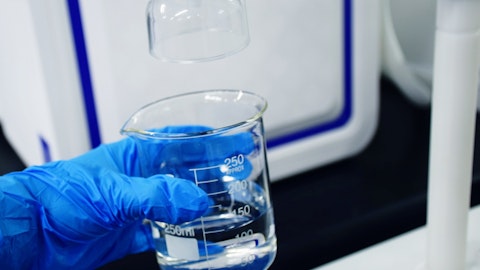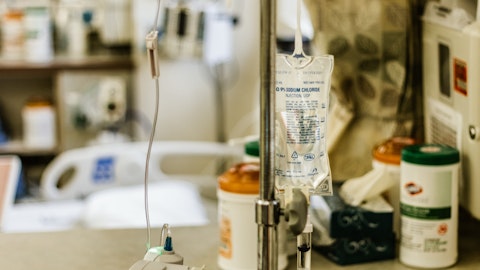Reshma Kewalramani: Yes, sure thing Geoff. Let me start with the VX-522 question, which is the mRNA program that we are developing in collaboration with Moderna. And then we’ll switch to the 548 program in pain. So with regard to VX-522 and the mRNA program, the biggest challenge we and others have faced through the development of this approach for those last 5,000 patients who cannot benefit from CFTR modulators because they simply don’t make any protein, it’s been delivery. That is really what we have been working on for years. And it was only about 12 months, 18 months ago that we really had a big breakthrough in that area. The reason for our excitement for this program is that we can now deliver with our LNPs into our HPE cells using those same assays that are not only qualitatively translated to what we see in the clinic but quantitatively so.
Second, we also can show that the protein expression levels with that mRNA delivery is high with high chloride transport. That’s the direct readout for CFTR function. And then lastly, we have taken this mRNA LNP construct and administered it to small animals and large, and we can deliver it to the right cell. That’s a really important part of doing this in patients. So that’s the technical challenges we’ve overcome and it’s really been all about delivery. With regard to VX-548, yes, you’re right. The plan is to complete the studies, all three Phase 3 studies, the two RCTs, which are very similar to what we’ve already done in Phase 2 and the one single arm study, let’s call it an all-comer study. So we get different pain types. We are projecting that we’re going to complete those trials towards the end of this year, beginning of next, and we’ll share all the data at the same time.
Stuart, over to you for commercial potential.
Stuart Arbuckle: Yes. So Geoff as we’ve described before, this is a very big market opportunity with 1.5 billion treatment days of acute pain therapy prescribed per year. Just to dimensionalize that I talked in my prepared remarks about two-thirds of those prescriptions are either written and dispensed in a hospital or institution or ambulatory care center or they are written in the institutional setting, but given to a patient on discharge and therefore filled in the retail setting. And the combination of those two accounts are about two-thirds of the 1.5 billion treatment days. When we’ve talked to stakeholders across the board, they are well aware of the unmet need for new therapies in the acute pain space because all institutions and all states have put in place restrictions on the use of opioids.
It’s created this gap in the market for products like 548 that have a really positive benefit risk profile. I do think we are beginning to see a sea change in terms of policies which have been focused on limiting utilization of opioids to actually policies which are looking to remove barriers that might be created by cost sensitivity. And I’ll point you to the NOPAIN Act, which I refer to in my prepared remarks that directs CMS to develop a system of add-on payments for non-opioid pain medicines in addition to the bundle payment that they give to hospitals for the outpatient and the ACS setting. I see that as a really important sea change and recognition that these are cost sensitive segments, but this is a way of creating barriers or €“ sorry, reducing barriers or creating incentives to do the right thing and prescribe non-opioid pain management when they’re available.
Reshma Kewalramani: Hey Jeff, this is Reshma again, just to close out on pain. And others may ask questions later, but I just wanted to make sure I also mentioned the peripheral neuropathic pain with VX-548 that Phase 2 study also began last year. And those results we aren’t calling yet when they would be available, but I wanted to make sure that that study is also ongoing.
Geoff Meacham: Great, thank you.
Operator: The next question will come from Phil Nadeau with Cowen. Please go ahead.





